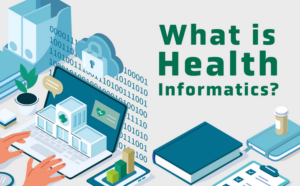DNP 805 Case Report: Health Care Informatics
 Directions: Choose a specific focus of patient practice (e.g., acute care hospital, clinic, primary care, long-term care, home health).
Directions: Choose a specific focus of patient practice (e.g., acute care hospital, clinic, primary care, long-term care, home health).
Select a particular disease process (congestive heart failure, fall, diabetes, etc.).
Identify and fully describe a technology element that could be involved in providing care to a patient with your selected disease process and the patient practice.
Define how this technology will integrate treatment, monitoring, or communication from the identified care setting to the home and then to ongoing care through the clinic.
Your case report must include the following:

Struggling to meet your deadline?
Get your assignment on DNP 805 Case Report: Health Care Informatics done by certified MDs and PhDs in the USA. ORDER NOW!
- Introduction with a problem statement and your disease process described from the focus of patient practice.
- Synthesized literature review.
- Description of the case/situation/conditions. Use a real-life patient situation or condition to describe your case, including the problems the patient encounters and the barriers to care.
- Describe at least one technology that may be used as a solution to the patient situation or condition described in your case.
- Describe how the technology can be used specifically in the case you have proposed.
- Summary of the case integrating proposed solutions(s).
- Keep in mind and integrate a Christian worldview when summarizing proposed solutions.
- Conclusion.
Case Report: Health Care Informatics
In recent years, the treatment and management of diseases in healthcare environments have undergone significant transformations. While nurses have traditionally played a central role in patient management, the strategies employed in this process have evolved over time, with a strong emphasis on developing optimal approaches. This has resulted in improved patient care and better outcomes, with technology playing a crucial role in this progression (Nair & Dreyfus, 2018). Various technological applications, including patient care technology, have been integrated into healthcare, impacting the management of conditions such as pressure ulcers. This paper aims to explore a specific disease process, detailing a technological element applicable in providing care for patients with the disease, and outlining how this technology can integrate treatment within the identified care setting.
The Disease Process and the Problem Statement
Pressure ulcers, also known as bedsores, refer to injuries to the skin and underlying tissues caused by prolonged pressure on an individual’s skin. Commonly occurring on bony areas like the tailbone, hips, ankles, and heels, pressure ulcers can develop in various care settings such as rehabilitation, long-term, and acute care facilities. Individuals with pressure ulcers may experience increased pain, prolonged hospitalization, and extended treatment and healing times. Despite past interventions, the incorrect management of medical devices and inadequate knowledge about pressure ulcer treatment, risk factors, and etiology hinder effective strategies for managing this condition. Hence, there is a need to explore better approaches, including technology in healthcare for pressure ulcer management, to address this issue.
The Synthesized Literature Review
To comprehend the devastating impacts of pressure ulcers in acute care settings, a literature review was conducted. Various peer-reviewed article databases were explored to gather relevant articles for synthesis. Gaspar et al. (2019) investigated prevention strategies for hospital-acquired pressure ulcers and found that using on-screen system reminders, preventive skin care, healthcare professional education, and applying dressing in specific areas were more effective. Studies employing multiple intervention programs reported higher efficacy in decreasing pressure ulcers compared to those using single interventions like repositioning and support surfaces.
Clay et al. (2018) aimed to determine the incidence and causes of device-associated pressure ulcers and formulate interventions. The study focused on two devices, Continuous Positive Pressure and Bilevel Positive Airway Pressure masks. Before intervention, device-related pressure injuries accounted for 81% of hospital-acquired pressure ulcers over two years. The application of adhesive foam dressing significantly reduced pressure ulcer development associated with these devices.
The literature review underscores the importance of multifaceted interventions in preventing pressure ulcers, especially in acute care settings, where device-related pressure injuries are prevalent. These findings emphasize the critical role of technology in implementing effective strategies for managing pressure ulcers in healthcare settings.
Mervis and Phillips (2019) delved into strategies for the prevention and management of pressure ulcers. Despite efforts towards prevention, pressure ulcers remain prevalent in hospitals and community settings. Repositioning, an intervention aiming to avoid prolonged locally sustained pressure, has been suggested, although studies on repositioning every two hours have produced inconclusive results.
Another intervention explored is the use of support surfaces, such as overlays and mattresses designed to minimize shear and lower pressure. Alternating pressure and constant low-pressure supports, including alternating pressure mattresses, have shown greater effectiveness compared to standard mattresses (Mervis & Phillips, 2019). Nutrition is considered, with a nutritional assessment performed to identify and address deficiencies in minerals, vitamins, calories, and proteins to prevent pressure ulcers.
Dressings, including prophylactic dressings like foams, hydrocolloids, and films, are employed to reduce shear and friction’s impact on at-risk body parts. Topical agents like fatty acid creams, including ointments and lotions, are also utilized (Mervis & Phillips, 2019).
Pressure ulcers, resulting from sustained pressure on the skin, pose a substantial source of morbidity and mortality. Despite receiving attention, pressure ulcers remain a significant burden on the healthcare system, impacting patients negatively. Preventive measures have been implemented, focusing on improving care outcomes at affordable costs. For cases where pressure ulcers have already developed, surgical and non-operative management strategies, along with appropriate wound care management, are indicated.
Pressure ulcers can lead to various problems for patients, including pain and prolonged hospital stays, exposing them to additional health risks. Barriers to care include incorrect management of medical devices and insufficient knowledge regarding pressure ulcer treatment, risk factors, and etiology.
Case Description
The case involves a 50-year-old immobilized patient with a history of sclerosis, experiencing pressure ulcers in the legs and arms. Positioning the patient is challenging due to severe pain and physical limitations, although the patient is mentally active.
Technology Solution: Alternating Pressure Mattresses
In addressing the patient’s situation, alternating pressure mattresses emerge as a technology-based solution. These mattresses, with air-filled compartments inflating and deflating synchronously, continuously vary pressure across the patient’s body. Despite heterogeneous studies on air cell cycling times and specifications, alternating pressure mattresses have shown greater effectiveness than standard mattresses.
For the patient in the case study, repositioning may be harmful due to pain and physical complications. Alternating pressure mattresses, relieving pressure and dynamically redistributing it, offer a suitable solution. The inflated air cells provide support, while deflated cells relieve pressure on the skin.
Summary of the Case
In summary, pressure ulcers necessitate control, treatment, and management. The literature review explored various interventions, and for the specific case discussed, the proposed solution involves using alternating pressure mattresses. The hope is that this technology will aid the patient’s recovery and prevent further development of pressure ulcers.
The role of technology in healthcare is pivotal, and this case report highlights the application of alternating pressure mattresses as a technological solution for pressure ulcer prevention and management in a real-life patient scenario. By integrating a Christian worldview in healthcare practices, we can enhance the compassion and effectiveness of care provided to patients facing challenges like pressure ulcers.

Dont wait until the last minute.
Provide your requirements and let our native nursing writers deliver your assignments ASAP.

